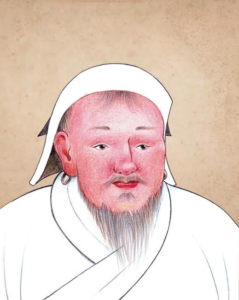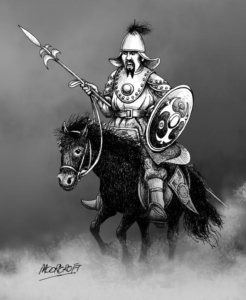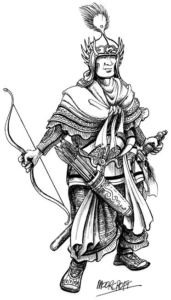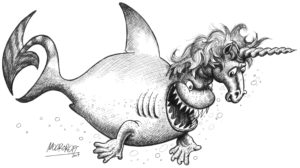In 1271 when Marco Polo left Venice at the start of his journey to the land of the Kublai Khan, there was another Marco that traveled with the expedition.
In the early 13th century a Mongolian named Temujin became a powerful leader when he united the neighbouring Mongol tribes. With this army he fell upon nations further away including China and eventually established a vast Empire stretching across Asia from the Pacific Ocean to the Caspian Sea. When Temujin became Kahn [ruler] he adopted the name Genghis.

History portrays Genghis Kahn as a brutal emperor who slayed millions in his quest for power and domination. Most statistics claim that 40 million Chinese, Asians and Eastern Europeans were massacred. In many areas, entire civilian populations were eliminated.
The Persian Khwarezmid Empire was crushed by the Mongol army, wiping out 90% of the civilian population!
Let us look at the data available.
The problem with statistics, even those that are correct, one tends to glance through them without question or closer scrutiny. After consulting the fourth source of reference that concurred with the 40 million dead, I lost a few nights sleep trying to see these horror figures in perspective.
Let us firstly realize that we are talking about the Middle Ages where state of the art killing machines like planes, bombs, tanks, guided missiles, long range field guns, high powered rifles and deadly drones were unheard of.
During World War II, the 10 most heavily bombarded cities barely totaled half a million deaths! Bear in mind that we are referring to the thousand bomber raids over Germany and Japan, plus the 2 Atom bombs on Hiroshima and Nagasaki, not to mention Hamburg, Dresden and Tokyo that developed into firestorms where thousands were trapped and perished long after the bombers left.
For 40 million people to die during the Genghis Kahn’s reign, they would have had to be killed one at a time using swords, spears, knives and clubs to dispatch them. No efficient weapons of mass destruction here.

The Mongolian army was mostly mounted. Their horses were small sturdy ponies with thick hairy manes and tails, as this picture shows.
At this point one needs accurate population statistics for the Mongols, the Chinese and the rest of Asia where the Genghis Kahn’s soldiers had swept through. The best I could find [if anyone out there knows of a better source, please let me know] was this site.
http://www.worldhistorysite.com/population.html
According to this reference the total Chinese population in 1200 was 32 million. Since the Genghis Kahn only attacked the Xia and Jin dynasties in northern China, [Southern China was subdued two generations later by Kublai Kahn] we must assume that only 16 million Chinese faced the Genghis army. This same reference source also tells us that the total population of the rest of Asia in 1200 was 14 million. Included in this figure are the Mongolians themselves! If we once again assume that they made up half this number, 7 million, then killing the other 7 million plus the 16 million in China itself, he would have wiped out every single person, leaving not one live human being in these two massive areas, making his slaughter total only 23 million! But statistics tell us he massacred 40 million!
Something is obviously wrong somewhere. The total population of all the combined countries in Asia must have been far greater than my reference estimates. Or is the 40 million an ancient conspiracy theory, initiated by the defeated countries to give the Genghis Kahn a bad press?
Other references, without giving exact figures, indicate a massive drop in population between 1200 and 1300. It is without doubt that the Genghis Kahn massacred millions but the mind boggles that it was carried out man to man, face to face.

A Mongolian General [drawn from an ancient picture]
Two generations later, Genghis Kahn’s grandson Kublai Kahn marched into southern China and carried on where his grandfather had left off. Into this troubled history, stepped the Polo brothers with Niccolo’s son, Marco Polo and traded with the Mongols. In my story, ‘the Other Marco’ also tells of his involvement with these fearsome warriors.
When reading an article about army ants that travel in massive columns across the land and devour everything in their way, including plants, insects and even animals, I was amused by the writer calling them ‘the Mongolians’ of the ant world!
What a reputation to have!
It is not Monster time, but 9 year old Aydan in Portland, Oregon, who has imagined the past Monsters that I drew, sent me this drawing of a fish he did. It think it is a very good drawing/painting and that is why I am including it here.

I suppose with those sharp teeth, this fish could be a Piranha! Well Piranhas are not monsters so this is not a monster sneaking into an odd-numbered posting.
Perhaps we should use these odd-numbered posts to invite all the youngsters out there to send in their drawings. I will include them and you can see your work on this blog. Send your drawing to my e-mail address:
theothermarcostory@gmail.com
Next post is even- numbered TOM #10 which means Monster time again. See you there.



